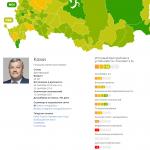The successful development and sound sleep of the baby in the first months of his life is completely dependent on the quality and quantity of breast milk. But unfortunately, mother's milk does not always meet the standards and can cause restless behavior and various kinds of diseases in the baby. Therefore, very often pediatricians recommend that women do an analysis of breast milk.
Breast milk analysis: types and reasons why it must be taken
Breast milk is the ideal food for a baby during the first year of life. But unfortunately, it can not always be beneficial and serve as an excellent tool for strengthening the immune system of the baby. The fact is that milk consists of hundreds of components that are not always useful. Thus, the quality of breastfeeding depends on the fat content of milk, the presence of pathogenic microbes and antibodies in it. In this regard, the following types of breast milk tests are distinguished:
- for sterility;
- for fat content;
- for antibodies.
Breast milk is not always beneficial for a growing body.
Analysis of breast milk for sterility
Previously, it was believed that breast milk is absolutely sterile and its use cannot harm the health of the baby. But recent scientific studies have shown that in some cases, mother's milk can be extremely dangerous and cause the development of pathologies in the baby, since various pathogenic microbes and bacteria can be present in it. In a normal course, these microorganisms in a small amount constantly live on the skin, mucous membranes and in the intestines. But with a decrease in the immune system, which is especially typical for a woman's body after pregnancy and childbirth, they begin to actively multiply and enter breast milk, thereby causing various pathologies and disorders in both mother and baby. Most often, microorganisms enter the mammary gland through cracks and wounds on the nipples and areolas.
The most common microorganisms in breast milk are:
- golden staphylococcus aureus;
- enterobacteria;
- klebsiella;
- mushrooms of the genus Candida;
- coli;
- epidermal staphylococcus aureus;
- Pseudomonas aeruginosa.
Staphylococcus aureus is one of the most dangerous microorganisms that contributes to the development of purulent mastitis.
Analysis of breast milk for sterility is necessary to identify the nature of pathogenic microbes, their number and sensitivity to antibiotic therapy. This test is not mandatory for all breastfeeding women. It is necessary only if you suspect inflammatory processes in the mammary gland of a woman and infectious diseases in the baby's body.
Indications for analysis by the child
- purulent-inflammatory rashes on the skin;
- long-term stool disorder, characterized by light green feces or the color of marsh mud with mucus;
- bloating, increased gas formation and constant colic;
- increased body temperature;
- frequent regurgitation;
- vomit.
Purulent-inflammatory rashes on the body of a child may indicate the presence of a staphylococcal infection in breast milk.
But these symptoms do not always indicate an inflammatory process in the mother's body. Sometimes the cause of all disorders can be the wrong diet of a nursing mother. Moreover, in 80 - 90% of cases, colic is a normal phenomenon for the first three months of a baby's life.
For medical reasons, the first month my child was completely bottle-fed. All this time we did not have any problems with the tummy and stool. But as soon as I gradually began to transfer my daughter to breast milk, real problems with the tummy began. Especially the child suffered from colic. This led to a series of sleepless nights and constant whims. The district pediatrician constantly insisted that it was necessary to endure the first three months, then the colic would disappear on its own. She also recommended that the baby be properly attached to the breast so that she does not capture air during feeding and exclude fatty, spicy, carbonated drinks and the like from the diet. Although I already ate only oatmeal for almost the first six months. Therefore, for the most part, colic is a normal reaction of a fragile organism to new food. Moreover, I heard from my grandmother such a statement that boys have colic much less often than girls.
Indications from the female body for the analysis of breast milk for sterility
The reasons why a woman should do an analysis for the sterility of breast milk:
- soreness and swelling of the mammary gland, accompanied by purulent discharge from the nipples;
- reddening of the skin of the gland and an increase in body temperature up to 38 - 40 ° C.
All of the above signs are symptoms of purulent mastitis.
Redness of the skin may indicate purulent mastitis
According to the World Health Organization, there is no need to stop lactation if pathogenic microbes are found in breast milk. Experts explain this by the fact that microbes and bacteria, getting into the baby's body with milk, stimulate the production of antibodies that protect the baby. The exception is the presence of Staphylococcus aureus in milk, which is the causative agent of purulent mastitis. Lactation can be resumed after a complete cure.
How to collect the analysis of breast milk for sterility
For the most part, the results of any analysis depend on the correct sampling of the test material, in our case, breast milk. And also an equally important condition in carrying out this analysis is the collection of milk from both mammary glands. To get the most reliable result, you must:
- Prepare in advance two special plastic containers for taking tests, which are sold in pharmacies or small glass jars with a lid. Glass jars and lids must be thoroughly washed, boiled for at least 20 minutes and dried.
- Mark the containers so as not to confuse where the milk will be from the right breast, and where - from the left.
- Wipe hands and mammary glands with 70% alcohol.
- Express the first 5 - 10 milliliters of milk from each mammary gland and pour it out, as they are not informative for analysis.
- Strain 5-10 milliliters of milk from each breast into the appropriate test tube.
- Take the collected material to the laboratory within three hours after pumping.
Breast milk for analysis can be expressed in special plastic containers, which can be purchased at a pharmacy.
A young woman during pregnancy has to take a large number of stool and urine tests almost every month. And this is also required by monitoring the development of the baby in the first year of his life. In this regard, I would like to note that the cost of purchased containers for taking tests practically does not differ from the cost of fruit baby food in glass jars of 50-80 grams. Therefore, deciding to save my budget during pregnancy, I just specifically bought baby food. And the jar was used for its intended purpose. Later, when she began to introduce complementary foods to the baby, a large number of these jars accumulated. But not all laboratories, including state ones, accept analyzes in glass containers. Therefore, before collecting material, it is necessary to clarify this information.
Sterility test results
You will have to wait at least a week for the results of the analysis. This is due to the fact that in the laboratory, breast milk is sown on a special microflora, where colonies of bacteria and microbes germinate only after 5-7 days. Then the laboratory assistant determines the type and amount of the pathogen under a microscope.
Analysis of the sterility of breast milk is done at least 5 - 7 days
In either case, it is possible to get one of three possible outcomes:
- As a result of laboratory studies, the growth of microflora was not revealed. This means that breast milk is absolutely sterile. Unfortunately, such cases are very rare.
- When sowing milk, there is a slight growth of bacteria that do not pose a threat to the health of a nursing woman and a baby. Such bacteria include: epidermal staphylococcus aureus, enterococcus). In this case, there is no need for treatment and termination of lactation.
- When sowing breast milk, there is a significant increase in pathogenic microbes and bacteria. Normally, their number should not exceed 250 colonies per 1 milliliter of milk (CFU / ml).
Analysis of breast milk for fat content
As mentioned above, breast milk consists of a large number of components. At the same time, the quality and their quantity depends on many factors:
- months and duration of feeding. It is believed that after a year, milk becomes more nutritious and fatty in accordance with the needs of the baby's developing body;
- the diet of a nursing woman;
- hereditary predisposition of a young mother;
- emotional state of a woman.
If a child who is breastfed behaves calmly, gains weight well, develops according to age indicators, sleeps calmly and is awake, then this indicates the nutritional value and sufficient fat content of mother's milk. A well-fed child is a calm child. But if the baby constantly “hangs” on the chest and has to be supplemented with mixtures, sleeps poorly and lags behind in mental and physical development, then this can be a signal of “empty” breast milk. To be sure of her guesses, a woman can take an analysis on
In this case, it is enough to collect material from one mammary gland. The main thing is to express the “hind” milk, since the first 10 milliliters are characterized by a minimum percentage of fat content.
It is possible to check the fat content of breast milk not only in the laboratory, but also at home. For this you need:
- Prepare in advance a special plastic container for collecting breast milk or a small glass jar. The glass jar must be thoroughly washed, boiled for at least 20 minutes and dried. Ideally, it is best to use a test tube.
- Use a ruler to measure 10 millimeters (1 centimeter) from the bottom of the container and mark.
- Wash hands and mammary glands with liquid pH-neutral soap under warm running water.
- Express the first 10 - 15 milliliters of milk and discard.
- Express "hind" milk. The amount of milk should be at the level of the previously made mark on the container.
- Leave the container with the collected material for 5 - 7 hours in an upright position.
- After this time, take a ruler and measure the layer of cream that has formed on top.
- 1 millimeter = 1% fat.
- Normally, there should be at least 4% fat, that is, 4 millimeters.
To determine the fat content of breast milk, it is necessary to take "hind" milk
Analysis of breast milk for antibodies
An analysis of breast milk for antibodies is carried out in the event of a Rh conflict, when the Rh factors of the mother and baby do not match. It is usually done immediately after childbirth. Even during pregnancy, antibodies begin to be produced in the body of a woman, which, penetrating the placenta, can enter the body of the baby and cause a violation of intrauterine development. These antibodies completely disappear from the body of a young mother after half a month - a month after childbirth. For some women in labor, this happens much earlier, since the body of each woman is individual. Therefore, in order to prevent their entry into the body of a newborn along with mother's milk, doctors recommend refraining from applying the baby to the breast for the first month or until the results of the analysis confirm the absence of antibodies. In this case, artificial feeding is even welcome.
Some obstetricians - gynecologists with Rhesus conflict still allow the young mother to attach the baby to the breast immediately after childbirth. But at the same time, the state of health of the baby is constantly monitored.
Rules for collecting breast material for antibodies
To obtain reliable antibody test results, you must:
- Prepare in advance a special plastic container for collecting breast milk or a small glass jar. The glass jar must be thoroughly washed, boiled for at least 20 minutes and dried.
- Wash hands and mammary glands with liquid pH-neutral soap under warm running water.
- Express 10 ml of breast milk into a container.
- Deliver the material for analysis to the laboratory within three hours after pumping.
Do not test for antibodies during antibiotic treatment.
Where can breast milk tests be done?
A woman can do an analysis of breast milk on her own initiative or on the recommendation of a doctor. In the latter case, the specialist gives her a referral.
Since this type of analysis requires special laboratory equipment and highly qualified specialists, the number of laboratories of this profile is quite limited. Usually it can be done in large private medical centers or on the basis of some perinatal institutions.
Video: Dr. Komarovsky about staphylococcus aureus in breast milk
A healthy mother and sterile milk is the key to the successful development of the baby. And in many ways, the health problems of the baby are directly related to the processes occurring in the mother's body.
Mom's milk is recognized as a unique product with an ideal balance of nutrients. Getting it by a child regularly causes strong immunity, reduces allergic reactions, which is not uncommon for artificial mixtures. But even such a product can sometimes be harmful. Consider such a study as the analysis of breast milk, its types, methods.
What is the name of the analysis of breast milk?
Before handing over breast milk for analysis, the mother must clearly determine the need for this procedure. There are several ways to carry out such diagnostics, depending on the goals. This biological product is often tested for:
- sterility;
- fat content;
- the presence of antibodies.
Analysis of breast milk for sterility
This technique is necessary to exclude the presence of harmful microorganisms. They can penetrate both from the outside, and move from the focus of inflammation in the body of a woman along with the blood flow. Such an analysis of breast milk specifically identifies the type of microorganism, determines its concentration. Based on the results obtained, drugs are prescribed. Deciphering the analysis of the microflora of breast milk is carried out exclusively by a doctor. Often fix the presence of:
- staphylococcus;
- enterobacteria;
- fungus candida;
- klebsiella.
The study is mandatory in the presence of inflammatory and infectious processes in the gland. Accurate identification of the pathogen helps to quickly start effective therapy, eliminate the symptoms and manifestations of the disease. The nursing woman herself should be interested in his appointment. The complexity of implementation is often due to the lack of necessary equipment and personnel.

Analysis of breast milk for fat content
This type of test determines the presence of fats. Such elements are difficult to digest. Because of this, babies often have digestive problems. The analysis of breast milk for composition also involves determining the degree of its fat content. At the same time, for testing, it is necessary to collect only the biological material that is released after about 2-4 minutes from the start of pumping. For collection it is necessary to use a clean, washed and sterilized container.
The resulting material is poured into a test tube. It has a notch, which is located 10 cm from the bottom. After waiting 6 hours, the result is evaluated. After this time, a layer of cream forms on the surface. It is important not to shake the container during the test. When evaluating the results after the analysis of breast milk, it is considered that 1 mm of the creamy layer corresponds to 1% fat content. According to statistics, this indicator is an average, so do not worry if it differs slightly downwards. Problems can arise in the opposite case - due to a large percentage of fat.
Analysis of breast milk for staphylococcus aureus
This method is often carried out when determining the causes of mastitis during lactation. It can develop as a result of stagnation or penetration of pathogenic microorganisms through nipple cracks. In order to take an analysis of breast milk for staphylococcus, a woman takes it into a sterile container. The resulting sample is sent to the laboratory. The material is placed on a nutrient medium, cultivated. Over time, the result is evaluated by microscopy. In most cases, identifies the appointment of antibacterial drugs leads to getting rid of mastitis.
Analysis of breast milk for antibodies
It is carried out in the presence of a Rh conflict - a violation in which the Rh factor of the mother and child do not match. To exclude the possibility of getting antibodies from the mother's body to the baby, doctors advise to stop breastfeeding or wait until the baby is one month old. You can exclude this fact by conducting a test. Deciphering the analysis of breast milk is carried out exclusively by a doctor. As a result, the concentration of antibodies present is indicated, if any, or their absence is stated.

Where can I take a breast milk test?
Talking about where you can do an analysis of breast milk, doctors first name large medical centers. Laboratories also function at perinatal institutions. Laboratory diagnostics requires special modern equipment and qualified personnel. Depending on the type of study, the speed of obtaining results may vary. For example, when determining sterility, it can take about a week.
How to collect breast milk for analysis?
Talking about how to properly donate breast milk for analysis, doctors note that sampling from each gland should be done in different containers. In this case, it is very important to carry out the preparation process, which consists in the following:
- thorough hand washing with soap;
- gland hygiene;
- treatment of the alveolar region with an alcohol solution.
The last portion is used for evaluation. Its volume should not exceed 10 ml. In the process of decanting, it is necessary to avoid touching the nipples with your hands. Transportation of the sample is carried out in a container, no later than 2-3 hours from the moment of sampling. Storage of the collected material even in the refrigerator before transfer to the laboratory is unacceptable. This can skew the results when determining the percentage of fat content.
Considering all the above rules, the mother can first breastfeed the baby so as not to express it on her own, if feeding during this period is not prohibited. With the results obtained, it is necessary to contact a specialist in the processes of lactation. Evaluation of available data helps to identify problems and ways to solve them. Full compliance with the recommendations and instructions given leads to the normalization of the lactation process, eliminates digestive disorders in the baby.
When is sterility culture required? How to properly prepare for analysis. How are cultures carried out in laboratories and microbes are detected? Deciphering the results. What to do if the norm of bacteria exceeds.
A woman's milk is a complex biochemical element. It is able to form the immunity of the baby, strengthen his health. Therefore, breastfeeding is the best food for a child in his first months of life.
But it happens that during breastfeeding a woman may develop an infection, and then there is a danger of harmful bacteria entering the milk. What can a sterility test tell and how is it performed?
When examining milk in the laboratory, the number of bacteria is determined, and then treatment is already prescribed. Insidious microorganisms penetrate into the breast of a woman, through small microcracks, when the baby is being fed.
These microcracks are formed in all nursing mothers, but the penetration of harmful bacteria occurs only in those whose body is weakened, resulting in reduced immunity. Constant lack of sleep, overwork cause a weakening of the body, and it becomes vulnerable to infections.
Breast milk research is required in such cases:
- When any postpartum infection is found in the body.
- With premature birth.
- If the baby has pustules and rashes.
- With loose stools and diarrhea in a baby.
- Donation of milk.
- Lactose, with stagnation of a woman's milk.
- Mastite when the mammary gland becomes inflamed.
Seeding is necessary in all of these cases. Since it is this analysis that allows you to identify what caused the disease, determine the pathogen, and prescribe treatment. As a rule, in such cases, doctors require you to stop feeding.
Sowing preparation
![]()
![]()
Before you start collecting milk, you need to prepare a special sterile container. At the next stage, you need to treat your hands and chest, they are first washed with soap and then treated with alcohol. The first 5 milliliters are not taken for analysis, so they need to be drained.
Then 10 ml is expressed from each breast and poured into prepared containers. The container is closed with a lid. Each container is labeled, indicating the age of the nursing mother, last name, and from which breast the breast milk was taken.
It is desirable to hand over the collected material to the biological laboratory within two to three hours, but if this is not possible, then it can be kept in the refrigerator for no more than 24 hours
How do laboratories conduct cultures to detect microbes?
![]()
![]()
To correctly determine the sterility of breast milk, samples are specially sown on a special nutrient medium. Then it is placed in the hatchery, and kept for some time, until colonies of bacteria appear. Then, they are counted and the number of microorganisms in breast milk is determined.
It used to be thought that breast milk was absolutely sterile, but numerous studies have proven that this is not entirely true. Milk can still contain various microorganisms. Basically, these are representatives of conditionally pathogenic microflora, which most often quietly exist on the skin, mucous membranes, in the intestines and do not cause any harm. However, under certain conditions (decreased immunity, chronic diseases, general weakness of the body after an infectious disease, intestinal dysbacteriosis), they begin to multiply rapidly, causing various diseases.
The main bacteria that can live in breast milk are: staphylococci (epidermal and aureus), enterobacteria, Klebsiella, fungi of the genus Candida.
The most dangerous of this company is Staphylococcus aureus. It is he who, having penetrated into the mammary gland, can cause purulent mastitis in a nursing mother. And once in the baby's body along with breast milk, staphylococcus aureus can cause diseases such as:
- enterocolitis (frequent, loose, watery stools, abdominal pain, fever, frequent regurgitation, vomiting);
- purulent inflammation on the skin;
- the phenomena of intestinal dysbacteriosis (accelerated stools, excessive gas formation, accompanied by bloating and discharge of a large amount of gases during defecation, frequent regurgitation, the appearance of undigested lumps in the feces, a change in the color of feces - yellow-green, the color of marsh mud). Staphylococcus aureus is protected from the outside by a capsule that helps it penetrate organs and tissues without being destroyed. After the invasion, it begins to release toxic substances that have a destructive effect on the structure of cells. This type of staphylococcus is very resistant to various external factors, and it can be very difficult to “expel” it from the body. Other microorganisms, having settled in breast milk, can also cause a lot of trouble.
- Mushrooms of the genus Candida, hemolyzing Escherichia coli and Klebsiella, which penetrate the baby with breast milk, are able to ferment glucose, sucrose and lactose, while forming a large amount of gas. This, in turn, causes pain, bloating and diarrhea in the child.
How do microbes get into milk?
Microorganisms enter breast milk mainly through the skin. This can happen if the baby is incorrectly applied to the breast, the breast is incorrectly removed from his mouth, and mistakes are made when caring for the mammary glands. In such cases, microtraumas and cracks in the nipples may appear, which are the entrance gate for infection to enter the mammary glands and, accordingly, into breast milk.
Who "lives" in milk?
You can find out which microbes live in breast milk and in what quantity by doing a special study, the so-called sowing milk.
It allows you to detect various pathogens in it, determine their number and, if necessary, determine sensitivity to antibacterial drugs.
It is not at all necessary for all lactating women to take milk for analysis to find out if it is dangerous for the baby. Such a study should be carried out only in cases where there is a suspicion of infectious diseases in the baby or inflammatory diseases of the mammary gland in the mother.
In what cases is it necessary to hand over milk for analysis? The indications will be as follows.
From the side of the child:
- recurring purulent-inflammatory diseases of the skin;
- dysbacteriosis;
- prolonged diarrhea (frequent loose stools) with greens and mucus.
From mom's side:
- signs of mastitis (inflammation of the mammary gland) - chest pain, fever, redness of the skin of the mammary gland, purulent discharge from it.
How to collect milk for analysis?
When collecting breast milk for analysis, it is important to understand that it is necessary to try to exclude the possibility of bacteria from the skin entering the milk. Otherwise, the result of the study may be unreliable. There are certain rules for collecting breast milk for sowing.
- First of all, you need to prepare a container for expressed milk. These can be sterile disposable plastic cups (you can buy them at a pharmacy) or clean glass jars that must first be boiled with a lid for 15–20 minutes.
- There should be two containers for expressed milk, as the milk for analysis from each breast is collected separately. Containers should be labeled from which breast the milk was taken.
- Before pumping, wash your hands and chest with warm water and soap.
- The first 5–10 ml of expressed milk is not suitable for testing and should be discarded. After that, the required amount of breast milk (5–10 ml from each mammary gland is required for analysis) must be expressed into prepared sterile containers and tightly closed with lids.
In the laboratory, milk is sown on a special nutrient medium. After about 5-7 days, colonies of various microbes grow on it. Next, it is determined to which group of pathogens these microorganisms belong, and their number is counted.
Should I breastfeed with mastitis?
If germs are present in breast milk, a breastfeeding mother should consult a doctor. Only he can decide whether treatment is necessary or not. The World Health Organization (WHO) believes that the detection of bacteria in breast milk is not a reason to stop breastfeeding. The fact is that all pathogens, penetrating into the body of a nursing mother, stimulate the production of special protective proteins - antibodies that get to the baby during feeding and protect him. That is, if some microorganisms are found in the milk, but there are no signs of disease (purulent mastitis), breastfeeding will be safe, since the child receives protection from infections along with milk.
.jpg)
If staphylococcus is found in breast milk, treatment with antibacterial drugs is prescribed only in case of purulent mastitis in the mother, when she has signs of infection. At the same time, doctors recommend temporarily (for the duration of the mother's treatment with antibiotics) not to put the baby to the diseased breast, to regularly express milk from it, but to continue to feed him from a healthy mammary gland.
In cases where the symptoms of a staphylococcal infection are found in both the mother and the child, the mother and baby are treated simultaneously. At the same time, this disease can manifest itself in a child in different ways:
- inflammation of the mucous membrane of the eyes (at the same time, the eyelids swell and the eyes fester);
- inflammation of the area around the navel (the skin in this place swells, turns red and pus is released from the umbilical wound);
- purulent-inflammatory skin lesions (bubbles of various sizes appear on the baby's skin, filled with purulent contents, and the skin around them turns red);
- inflammation of the small and large intestines (in this case, abundant watery stools appear up to 8-10 times a day, maybe with an admixture of mucus and blood, vomiting, abdominal pain).
To confirm the diagnosis and determine the pathogen, the doctor may prescribe a culture of the inflammation separated from the focus (eyes, umbilical wound, the contents of the vesicles on the skin). And in case of violation of the intestines in the baby, a fecal analysis for the microflora is prescribed.
How to keep milk "clean"
In order for the milk to remain “pure” and it was not necessary to interrupt breastfeeding, depriving the baby of the best food for him, a nursing mother can be advised to follow a diet with a restriction of sweet, starchy and rich foods, as their abundance creates a favorable environment for the reproduction and growth of microbes.
It is also important to prevent the formation of cracked nipples. And for this, you need to properly attach the baby to the breast (at the same time, the baby captures most of the areola, and not just the nipple, its lower lip is turned outward, and the nose touches the chest) and follow a few rules when caring for the mammary glands (wash the breast no more than 1– 2 times a day; arrange air baths for the nipples after feeding and between them; lubricate the nipples after feeding with drops of “hind” milk released at the end of feeding, as it has protective and healing properties and protects the nipple from dryness; do not apply to treat the nipple and areola, various disinfectants - brilliant green, alcohol, etc., as this contributes to the drying of the skin of the nipple and areola, followed by cracking).
If cracks nevertheless appear, then it is necessary to treat them in a timely manner in order to prevent the infection from joining and the development of mastitis.
.jpg)
Should I be treated if nothing hurts?
When staphylococcus aureus is present in breast milk, but there are no signs of infection in a nursing woman, breastfeeding is not stopped, but at the same time, as a rule, the mother is prescribed treatment (orally and locally) with drugs from the group of antiseptics that are not contraindicated in breastfeeding, and the child is given a doctor prescribe probiotics (bifido- and lactobacilli) for the prevention of dysbacteriosis.
Many women think that if there are no signs of a disease, then treatment can not be carried out. However, this opinion cannot be considered correct. The problem is that in such a situation, the mother’s condition will not worsen, but the baby can be harmed. If a child is fed infected milk for a long time, then the composition of bacteria in his intestines may be disturbed and the body's defenses will fail. Therefore, the mother must be treated without interrupting breastfeeding.
We evaluate the result of the analysis of breast milk
What can be seen on the analysis form that comes from the laboratory?
- Option 1. When sowing milk, no growth of microflora is observed, i.e. milk is sterile. It should be noted that this result of the analysis is very rare.
- Option 2. When sowing milk, the number of non-pathogenic microorganisms (epidermal staphylococcus aureus, enterococci) increased insignificantly. These bacteria are representatives of the normal microflora of the mucous membranes and skin and do not pose a danger.
- Option 3. When sowing milk, pathogens were found (Staphylococcus aureus, Klebsiella, hemolyzing Escherichia coli, fungi of the genus Candida, Pseudomonas aeruginosa). Their allowable content in breast milk is no more than 250 colonies of bacteria per 1 ml of milk (CFU / ml).
How to take an analysis
It is necessary to buy sterile containers from a pharmacy or prepare glass jars (for example, from baby food) and lids as follows: rinse without using disinfectants and boil for 20 minutes. Wash hands and chest with soap. Treat the nipples with vodka, dry with a sterile cloth. Do not express the first portions of milk into the prepared dishes. Express the second portion of milk in an amount of about 10 ml into a jar separately for each breast. Jars sign: left breast, right breast. Deliver milk to the registry office within 3 hours.
Testing times:
Monday-Friday: 8.00.-18.00
Saturday: 9.00-15.00
Sunday: 10.00-13.00
Deadline: 1 week
Research in the laboratory
In the laboratory, a bacteriologist specialist inoculates breast milk taken separately from the right and left breasts on various selective nutrient media, counts the number of bacteria, thereby determining the massiveness of their contamination of milk. Determines the qualitative composition of microorganisms - pathogenic and conditionally pathogenic (these can be golden, saprophytic, epidermal staphylococci, streptococci, fungi, various enterobacteria, etc.). Conducts staging of isolated microbes for sensitivity to bacteriophages and antibiotics, antifungal drugs.
Due to the fact that different microorganisms require different growth times and temperature conditions, the identification of bacteria, as well as the setting of sensitivity to antibiotics, bacteriophages and antifungal drugs, the analysis is carried out within a week.
The result of bacteriological analysis
The reference value is the content in 1 ml of milk of no more than 250 bacterial colonies (250 cfu / ml). However, this value does not apply to pathogenic microflora (eg Salmonella, Pseudomonas aeruginosa). Recommendations for breastfeeding a child are not given in the response of the bacteriologist.
The result of bacteriological culture largely depends on the correct collection and delivery of the material, so be careful that microorganisms do not get into breast milk from the skin of the chest or hands when decanting, delivery of material for research is carried out within 3 hours.
The result of a bacteriological study of breast milk for sterility must be shown to your doctor, only he can prescribe effective therapy and select, based on the study of the sensitivity of microorganisms to antibiotics, bacteriophages and antifungal drugs, the most appropriate option for treating the infection. Only a pediatrician has the right to finally decide whether to stop or continue breastfeeding a child in each case.





